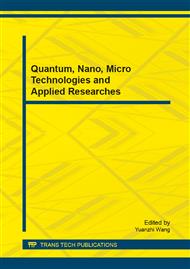p.162
p.171
p.180
p.187
p.194
p.203
p.207
p.212
p.217
Bio- and Psychophysical Audiology as a New Direction of Computer Technologies: The Substantiation and Possibilities
Abstract:
Audiometry, which is currently used in medical practice, is based on the experiments of the last century. Using numerous clinical tests, it's played a major role in the auditory disorders diagnosis. But its capabilities are very limited.Theoretical justification of the experimental facts accumulated by now, today allows to solve many problems of hearing, including the tasks of computational biology. Using the physical processes that are realized at sound transduction in the inner ear, we created an alternative (acoustic-wave) hearing model on pre-receptor level. Its main result is the analytical matching of the sound frequency for the corresponding coordinates of the spiral organ.This cochlear tonotopicity represents the ratio between stimulation frequency f and place l along the cochlea by the equation of the acoustic-wave hearing model at pre-receptors stage l (f) = Lo.22log (f/fmo), where Lo = 32 mm the cochlear duct length, fmo=20 kHz maxima frequency of audible sound.Biophysically is a substantiated age-related effect which attributable to changes in person perception the sound frequency. Age-related frequencies standards can be represented by f (t)=fmoert, where r=0.01 year1 high-frequency loss factor sound. Using both relations together, we get the length of the cochlear duct for T years LT=Lo.22log (fT/fmo). It can help you calculate the new biological parameters of inner ear in prognostic and reconstructive processes of hearing's change and to determine its quality. It can be used in the monitoring study, the effectiveness of therapeutic procedures and any pharmacological and physical therapy interventions, in assessing the impact of environmental factors on the person.The modern complex hearing audiology should be based on all-pass sound generator with constant power, should include the database and displays the information and tools under the new bio-and psychophysical capabilities.
Info:
Periodical:
Pages:
194-202
Citation:
Online since:
December 2013
Price:
Сopyright:
© 2014 Trans Tech Publications Ltd. All Rights Reserved
Share:
Citation:


